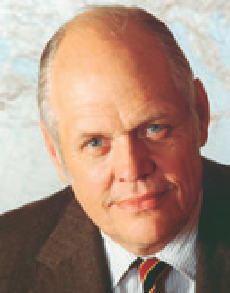Information Technology Reference
In-Depth Information
From minicomputers to portable computers
The rise and fall of DEC
Although users had been able to run their own programs on early computers like the ENIAC and the
EDSAC, a new usage model developed as the market for commercial computers exploded in the 1950s. A
new occupation called
computer operator
emerged. Computers sat in air-conditioned machine rooms, and
computer operators kept the machines running and loaded jobs onto the computer instead of allowing
users direct access to the hardware. This system was called
batch processing
, and although it made efficient
use of the very expensive computer, it could also be extremely frustrating for users trying to debug their
programs. Typically, a program consisted of a stack of cards on which the user had punched holes to repre-
sent data. The computer operators fed the cards into the computer, and the user received a printout for the
program some hours later, or even the next day if the program was run overnight. As you can imagine, users
found it extremely tiresome to wait twelve hours for their program to run. Sometimes, they picked up the
printout only to find an error message saying that the program could not run because the computer had
received an incorrect instruction, which might be as minor as a mistyped comma in one of the program
statements. As we saw in
Chapter 3
, such frustration led John McCarthy to develop the idea of time sharing,
in which multiple users could be connected to the computer simulta-
neously and have the illusion that they were the sole user. The com-
puter switched its attention from user to user, executing a small part of
each user's program during each slice of time. Because even the early
computers could perform many thousands of operations each second,
users had the impression that their program was running all the time.
Users interacted with the machine using their own computer
terminal
,
typically just a combination of keyboard and screen, but they could also
input programs and data using much faster paper tape or punch card
readers.
The efforts of McCarthy and others at MIT achieved success in
1961 when Fernando Corbató introduced the Compatible Time-Sharing
System (CTSS), one of the first working time-sharing systems, running
on the MIT Computation Center's IBM computers. IBM was skeptical
at first, but the success of time sharing in the early 1960s led to the
establishment of new companies that offered commercial time-sharing
services. Customers would buy time on the expensive machines and pay
for it by the minute. For a few brief years, time sharing seemed like the
path to the future, but it was soon overtaken by the development of the
minicomputer. In 1957, Ken Olsen (
B.8.13
), an electrical engineer from
MIT, had the bold idea of starting a new type of computer company.
Olsen had worked with Jay Forrester on Project Whirlwind to develop
a computer for the U.S. Navy. In 1952, while still a graduate student,
Olsen and his fellow graduate student Harlan Anderson had played a
major role in building a machine called the Memory Test Computer to
try out Forrester's ideas on magnetic core memories, working with one
of the MIT computing pioneers, Wesley Clark.
What was Olsen's bold idea? Frustrated with the slow develop-
ment of interactive and time-sharing computing at MIT, he decided that
B.8.13. Ken Olsen (1926-2011) began his
career by fixing radios in his basement
in Bridgeport, Connecticut. As a gradu-
ate student at MIT, he and fellow student
Harlan Anderson built the Memory Test
Computer to evaluate the feasibility of
using magnetic core memory. While at
MIT's Lincoln Labs, they were responsi-
ble, with Wesley Clark, for designing and
building the first transistorized research
computer, the TX-0. With his brother
and Harlan Anderson, Olsen founded
the first minicomputer company, the
Digital Equipment Corporation. Their
first computer, the PDP-1 was based on
the TX-0. From 1957 until 1992, Digital's
headquarters was located in a former
wool mill in Maynard, Massachusetts.


Search WWH ::

Custom Search